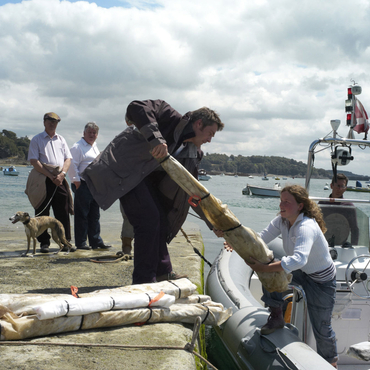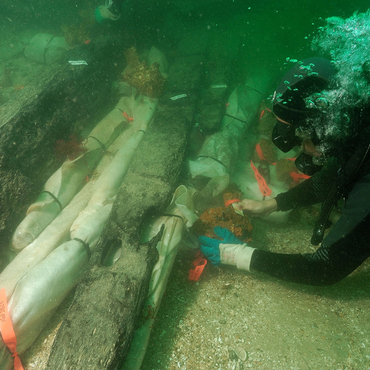
- Home
- Archaeological research
- Conservation and restoration
- Other vestiges
At the end of each campaign, the objects and structural elements removed were sorted based on their need for conservation. This ranking was done using scientific criteria; budgetary considerations and possible display of the objects were also taken into consideration. Wet objects that were not treated were kept in tubs of fresh water until the next campaign to give the team time for further reflection. Most of them were put back into the ocean the following year and preserved in situ.
Prior to being replaced, they were given twin labels to identify them in case they were brought back up at a later date. They were then wrapped in geotextile fabric and placed in specially-dug trenches located next to the shipwreck site.
Associated media
Open Media Library

Ready to return to the site

Return to the site
